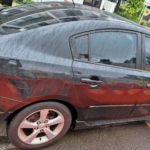Concrete, as a vital construction material, is widely used due to its durability and strength. However, over time, even the toughest concrete structures can suffer from wear and tear, cracks, and other damages. Understanding how to concrete repair is essential to maintain the structural integrity and aesthetic appeal of buildings and infrastructure. This comprehensive guide will provide you with all the necessary insights to tackle concrete repair effectively.
What Causes Concrete Damage?
Concrete can deteriorate due to a variety of factors, including:
- Environmental Factors: Freezing and thawing cycles, exposure to water, and temperature fluctuations can lead to cracking and spalling.
- Chemical Exposure: Deicing salts, chlorides, and acidic substances can corrode concrete repair, particularly when reinforced with steel.
- Physical Wear: High traffic areas and heavy loads can cause surface wear, leading to uneven or degraded concrete.
- Poor Installation: Improper mixing, inadequate curing, or low-quality materials can result in weak and brittle concrete.
Benefits of Timely Concrete Repair
Addressing concrete damage promptly offers several advantages:
- Enhanced Safety: Cracks and uneven surfaces can pose significant safety hazards.
- Increased Longevity: Timely repairs can extend the life of your structure.
- Cost Savings: Early intervention prevents more extensive and expensive repairs down the line.
- Aesthetic Appeal: Proper repairs restore the appearance of concrete, improving the overall visual appeal.
Types of Concrete Damage and How to Identify Them
- Cracks:
- Hairline Cracks: Typically caused by shrinkage or minor stress.
- Structural Cracks: Wider and deeper, often indicating serious structural issues.
- Spalling:
- Caused by freeze-thaw cycles or corrosion of embedded reinforcement.
- Discoloration:
- Results from chemical exposure or water infiltration.
- Scaling:
- Occurs when the surface layer peels or flakes off, often due to exposure to deicing chemicals.
Essential Tools and Materials for Concrete Repair
To effectively repair concrete, you will need:
- Protective Gear: Gloves, goggles, and dust masks.
- Concrete Patching Materials: Polymer-modified cement, epoxy compounds, or ready-mix concrete.
- Tools: Trowels, chisels, wire brushes, and drills.
- Sealants: Silicone or polyurethane sealants to prevent water ingress.
- Reinforcement Accessories: Rebar or mesh for structural repairs.
Step-by-Step Guide to Concrete Repair
1. Assess the Damage
- Inspect the affected area to determine the type and extent of damage.
- Identify whether the damage is structural or superficial.
2. Prepare the Surface
- Clean the Area: Remove dirt, debris, and loose particles using a wire brush or power washer.
- Remove Damaged Concrete: Use a chisel or hammer to eliminate weakened sections.
- Roughen the Surface: This ensures better adhesion of repair materials.
3. Choose the Right Repair Method
a. Crack Repair
- For Hairline Cracks:
- Apply a concrete sealant or epoxy resin.
- Smooth out with a putty knife and allow to cure.
- For Wider Cracks:
- Use a crack filler or polymer-based material.
- Reinforce with mesh if necessary.
b. Patching
- Mix a suitable patching compound as per manufacturer instructions.
- Apply using a trowel, ensuring even coverage.
- Allow the patch to set and cure for the recommended time.
c. Resurfacing
- Ideal for worn-out or uneven surfaces.
- Apply a thin overlay of polymer-modified concrete.
- Use a float to achieve a smooth finish.
4. Curing and Finishing
- Cover the repaired area with a damp cloth or plastic sheet to prevent rapid moisture loss.
- Avoid traffic on the repaired area until it is fully cured.
Preventative Maintenance Tips
- Seal the Surface: Regularly apply sealants to protect against water and chemical damage.
- Inspect Periodically: Routine inspections help identify issues before they worsen.
- Avoid Overloading: Prevent placing excessive weight on concrete structures.
- Clean Regularly: Remove dirt and debris to prevent surface degradation.
When to Call a Professional
While many concrete repairs can be done as DIY projects, certain situations require professional expertise, such as:
- Structural damage impacting the safety of the building.
- Extensive or deeply embedded cracks.
- Repairs involving large-scale resurfacing or reinforcement.
Professional contractors possess the tools, materials, and experience to ensure durable and high-quality repairs.
Conclusion
Concrete repair is an essential practice to maintain the safety, functionality, and appearance of structures. By understanding the causes of damage, utilizing the right tools, and following effective repair techniques, you can significantly extend the lifespan of your concrete surfaces. Whether it’s a minor crack or major structural damage, timely intervention is key.


